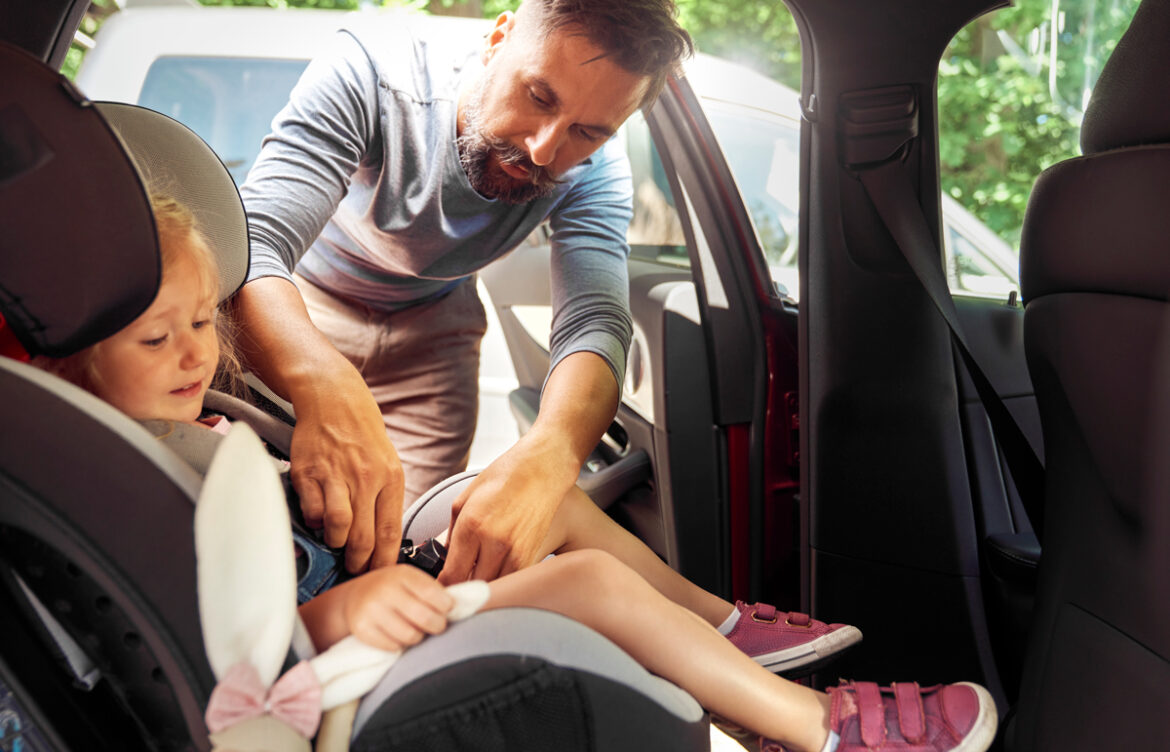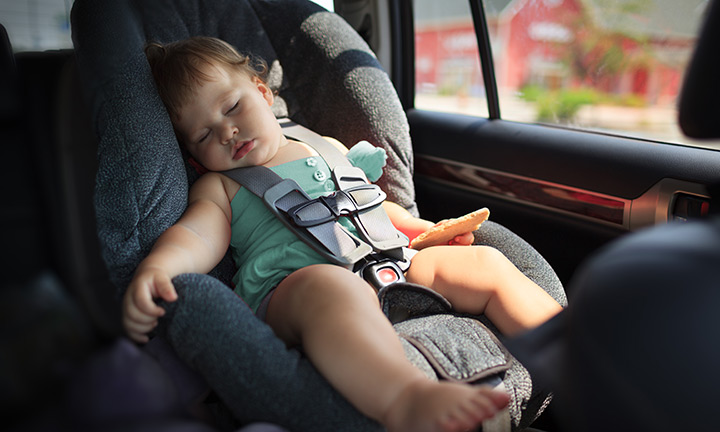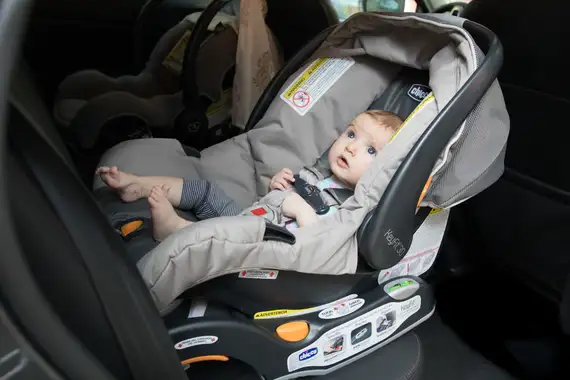
When Can a Child Stop Using a Booster Seat?
Is your child constantly nagging about getting rid of their booster seat? I hear you!
From my experience, I know that it’s part of a mother’s everyday routine to listen to her children’s growing-up wishes. That includes being upgraded to the ultimate coolness that is the standard car seat. But is it safe for your kid to wear a seat belt without a booster yet?
That brings us to today’s question, when can a child stop using a booster seat? I’ll give you the answer, along with some safety tips for the proper use of the booster seat, so read on!
When Should Your Child Stop Using Their Booster Seat?
According to a study I read by the American Academy of Pediatrics, a child can wear a seat belt without a booster once they’ve reached 4 feet and 9 inches in height. Children usually reach this height from ages 8 to 12, but the exact age ultimately depends on your child’s growth and build.

That said, kids have different body shapes, so even if your child reaches this height, the seat belt might not fit them comfortably. To know for sure whether it’s time to ditch the booster seat, you should check your kid’s posture on the seat and the belt’s position.
How to Tell When It’s Time to Stop Using the Booster Seat
If your child has reached the average height of wearing a seat belt, but you’re still not sure whether it’s safe, you’re not alone. I definitely needed some convincing to let go of the booster seat!
Luckily, there are a few extra pointers to guarantee that it’s time, and I’ve listed them for you.
1. Chest Belt Position
For maximum safety, the chest belt should go right across your kid’s chest and settle between their shoulder and neck.
If the belt goes across or is too near to your kid’s neck, it can cause serious injuries to the throat in case of an accident. Meanwhile, if it falls off the shoulder and is too far from the neck, it won’t keep your child in place in case of an abrupt stop.
2. Lap Belt Position
The correct position of the lap belt is right across the top part of your child’s thighs. It shouldn’t go around the abdomen because this area is surrounded by soft tissue. In case of a crash, the belt can dig too deep into this tissue and cause damage to internal organs.
Meanwhile, the hip bones are tougher, which prevents the seat belt from digging into them.
3. Knee Position
Your child’s knees should go naturally over the edge of their seat. They shouldn’t slouch their backs forward or force this position in any way because it might compromise the safety belt’s efficiency. If the seat’s edge touches your kid’s calf, then it’s still too early to ditch the booster seat.
4. Back Position
Another important pointer to check before ditching the booster seat is your child’s back position. Is it leaning comfortably against the back seat? Or is it slumped down, causing a gap between your child’s lower back and the seat?

The proper position is the former. Your child should be able to lean back comfortably, with their knees sitting at the edge of the seat.
If they push their hips forward to force the correct knee position, they’ll leave a gap between their back and the seat, which will cause the safety belt to loosen around their body. If your kids are in any way like mine, they’ll definitely try this trick on you, so beware!
5. Child’s Comfort
It’s essential for your child to feel comfortable in their new seating arrangement because then, they won’t need to move constantly and compromise the belt’s correct position.
Before letting go of the booster seat, try seating your child in the car while it’s parked for 20-30 minutes with the seat belt on. It won’t be easy, I know! But it’s essential because If they’re comfortable enough to sit still through this trial, then congrats, Mommy, you can bid the booster farewell!
Tips for Safe Use of the Booster Seat: From One Mother to Another!
If your booster seat days aren’t gone yet, here are a few tips to guarantee your child’s safety and comfort!
- Make sure the seat belt fits comfortably: You should always make sure the seat belt is positioned correctly over your child’s body and the booster, taking the pointers I mentioned above as a reference.
- Don’t use the same seat belt for two kids: If you have more than one child, each should sit in a booster seat and wear a seat belt. Using the same belt for two kids isn’t safe because, in case of a crash, they might collide dangerously.
- Install the booster seat correctly: Booster seats come in many shapes, and each has its own installation method. To make sure you install it correctly, check your seat’s manual or go to the nearest fire department and have them guide you to the right way.
- Distract your child: Kids get fidgety in cars, which can compromise both the seat belt and booster seat. To keep them calm till you arrive at your destination, distract them with coloring books, toys, Rubik’s cubes, music, etc.
- Avoid using a booster cushion: Booster cushions take up less space in cars, but they don’t provide a safety barrier between your kid and the car’s side in case of a side crash.
- Always put the booster seat in the rear: Front passenger seats often have airbags, which are extremely dangerous for children in case of crashes. To protect your kid, you should always put their booster seat in the back.
- Put the booster seat in the middle seat: The middle rear seat is the safest place to sit in any car because it’s away from impact points, so it’s the best place for a booster seat.
Related: What Side of the Car Do You Put the Infant Car Seat?
Questions I Get Asked a Lot!
When Should My Child Start Using a Booster Seat?
You should get a booster seat for your child as soon as they’ve outgrown their 5-point harness car seat. This usually happens around 4-5 years or when your child reaches 4 feet in height. If you’re still in the car seat phase, check out my comprehensive infant car seat guide!
Are High-Back or Backless Booster Seats Safer?
High-back booster seats are safer because they provide efficient protection for your child’s head and neck and are a better fit for seat belts. However, you can go with a backless booster seat if your car has high seats with headrests.
Can I Use a Lap Belt Only With a Booster Seat?
No, lap belts alone aren’t safe enough for kids, especially in the case of abrupt stops. If your car lacks a chest belt in the back, you should ideally install one or use a travel vest.
To Wrap Up
Ideally, your child should stop using a booster seat when they reach 4 feet and 9 inches in height, which usually happens around the age of 8-12 years.
However, before taking this step, make sure your child can sit comfortably with their knees right on the edge of the seat and their back leaned straight without slumping. Also, check that the chest and lap belts are in their proper positions, then, you’re good to go!